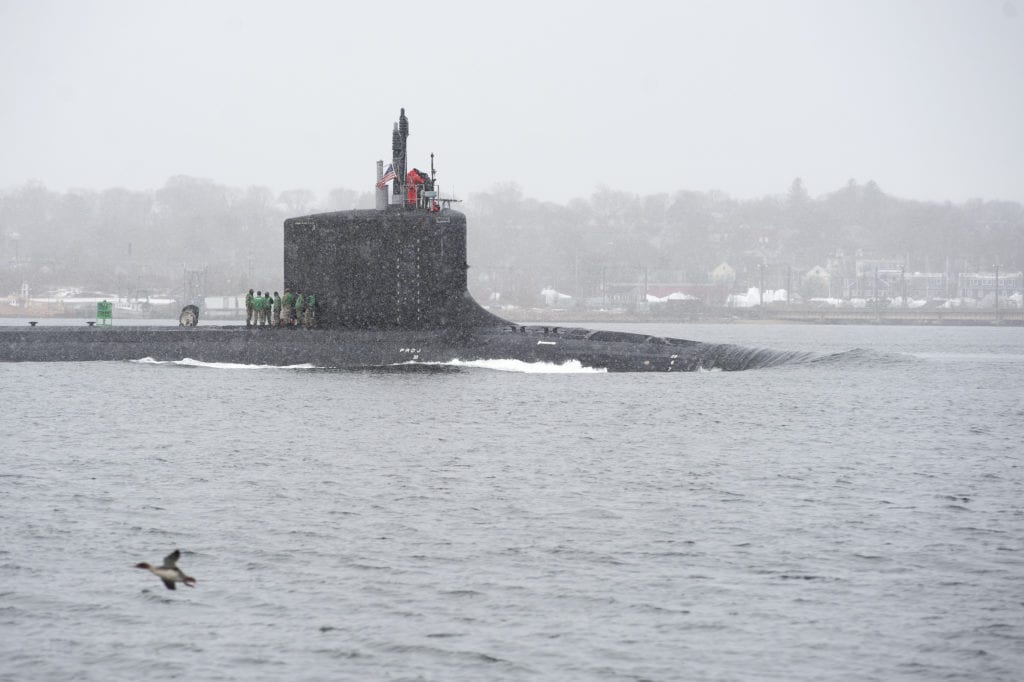Lawmakers Renew Push for Navy to Procure 3 Virginia Submarines Per Year

ARLINGTON, Va. — The Navy needs to increase procurement of its Virginia-class attack submarines (SSNs) to three per year in order to pace the potential threat of China and Russia, said the congressmen who lead the Seapower subcommittee in the House Armed Services Committee. The U.S. Navy also needs to push ahead with development of the follow-on to the Virginia class, they said.
Speaking Feb. 19 in a webinar sponsored by the Hudson Institute, Rep. Joe Courtney, D-Connecticut, chairman of the Seapower subcommittee, and Rep. Rob Wittman, R-Virginia, ranking member, were united in their reiteration of the need for more attack submarines and have renewed the push to include three in the 2022 defense budget, a level that nearly was achieved in the 2021 final budget.
Wittman noted a recent study that reinforced how “incredibly important getting to building three attack submarines per year will be for this nation going forward.”
Wittman said it was critical the Navy request a third SSN in the president’s 2022 budget proposal because “it is extraordinarily difficult to add things to the president’s budget.”
He recounted the effort to increase the procurement of a third SSN in the 2021 budget, which was ultimately unsuccessful when the proposed amendment was defeated in the House in a floor vote for the appropriations bill.
Wittman is optimistic the third submarine will be included in the 2022 budget, saying, “I think the glass is half full.”
Courtney also is optimistic, noting the recent statements by Defense Secretary Austin — a retired Army general — and Gen. Mark Milley, chairman of the Joint Chiefs of Staff — an Army general — that the budget “pie” may need to be sliced more in favor of naval, aerial, and cyber capabilities.
The construction of the Columbia ballistic-missile submarine that began recently is pressuring the budget of the Navy and capacity of the submarine industrial base.
“Frankly, we’re going to need more facilities if we’re really going to get serious about going for three [SSNs] per year on a regular basis,” Courtney said.
The nation’s two submarine builders are General Dynamics Electric Boat in Courtney’s district and Huntington Ingalls Newport News Shipbuilding in Virginia, Wittman’s home state.
Courtney said he also has concerns about the work force but is “bullish” on solving that challenge. He stressed the need to “keep performance of the shipyards at uppermost.”
Wittman supports the Navy’s plan to extend the service lives of some Los Angeles-class SSNs as part of the formula to a submarine force large enough to meet the potential threat from near-peer competitors like China and Russia.
He also stressed the need for the Navy to focus on development of the next-generation of attack submarines to assure no gaps as the production of the Virginia-class SSNs ends.